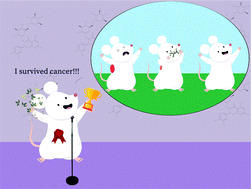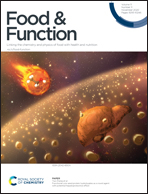Dietary flavone from the Tetrastigma hemsleyanum vine triggers human lung adenocarcinoma apoptosis via autophagy†
Abstract
Among all types of cancers, lung cancer ranks first in morbidity and mortality, and non-small cell lung cancer (NSCLC) accounts for 80–85% of all lung cancer cases. Chemotherapy has shown promising results, but the accompanying side-effects cannot be neglected. Herein, we introduce novel flavones (TVF), which were characterized as 3-caffeoylquinic acid, 5-caffeoylquinic acid, quercetin-3-O-rutinoside, and kaempferol-3-O-rutinoside by UPLC-MS/MS, derived from the vine of Tetrastigma hemsleyanum (TV), a traditional Chinese herb and food. TVF exhibited outstanding anti-cancer abilities at the in vitro and in vivo level, and markedly triggered apoptosis via the Bax/Bcl-2/caspase-9/caspase-3 pathway. The intrinsic mechanism study illustrated that TVF might induce apoptosis by activating autophagy by inhibiting the Akt-mTOR pathway, and the main component of TVF, quercetin-3-O-rutinoside, enabled THR308 site binding to block the phosphorylation of Akt, which was further evidenced by molecular docking computation. Our study reveals the excellent anti-cancer ability and inner mechanism of TVF, suggesting TVF as a potential candidate for clinical drug exploitation or dietary supplementation in cancer medication and prevention, providing a promising strategy for cancer chemotherapy.



 Please wait while we load your content...
Please wait while we load your content...